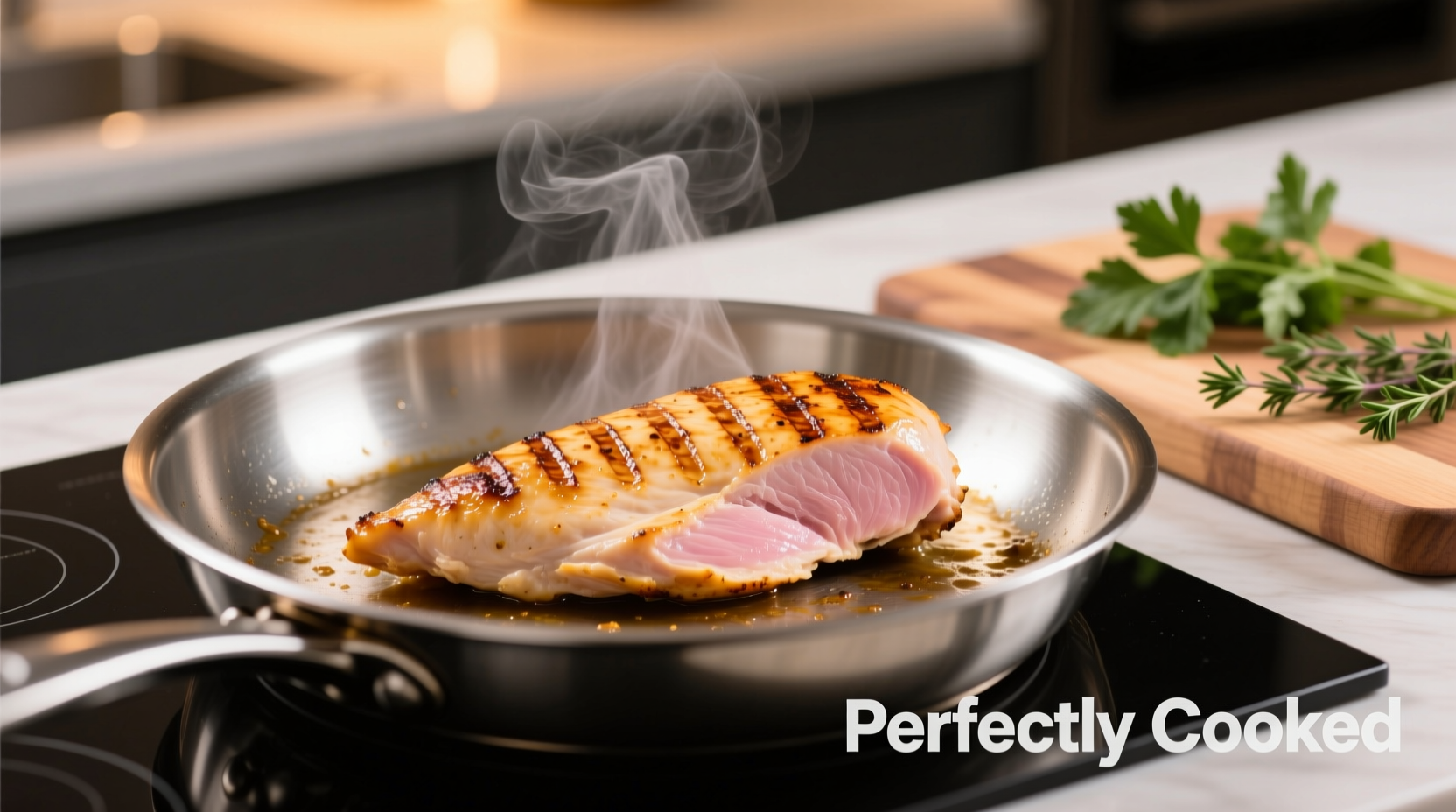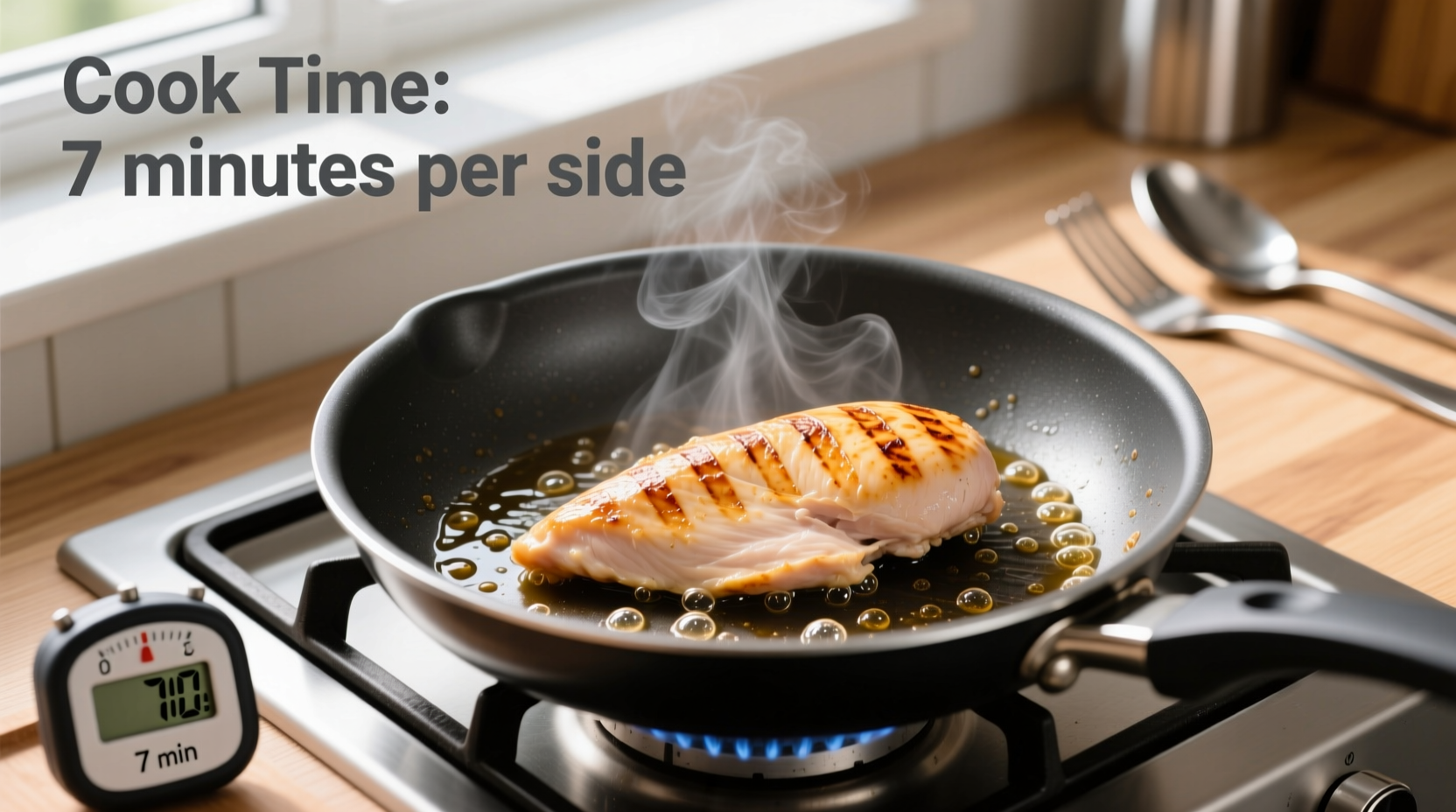Getting stove-top chicken breasts perfectly cooked can feel like a culinary tightrope walk. Too little time leaves you with unsafe, pink meat; too much creates dry, chewy results. As a chef who's cooked thousands of chicken breasts in professional kitchens and home stoves, I've refined the perfect timing formula that works every time.
Why Timing Matters for Thin Chicken Breasts
Thin chicken breasts cook significantly faster than their thicker counterparts, making precise timing essential. The USDA Food Safety and Inspection Service confirms that poultry must reach 165°F (74°C) internally to eliminate harmful bacteria like salmonella and campylobacter. With thin cuts, the window between undercooked and overcooked narrows dramatically—sometimes to just 30 seconds.
| Chicken Thickness | Recommended Stove Time | Internal Temp Target |
|---|---|---|
| ¼ inch (very thin) | 3-4 minutes per side | 165°F (74°C) |
| ½ inch (standard thin) | 4-6 minutes per side | 165°F (74°C) |
| ¾ inch (medium) | 6-8 minutes per side | 165°F (74°C) |
This timing chart reflects data from the USDA Food Safety and Inspection Service, which emphasizes that visual cues alone can't guarantee safety—only a thermometer provides certainty.
Step-by-Step Cooking Process
Preparation Essentials
Before heating your pan, properly prepare your chicken:
- Pound evenly: Use a meat mallet or rolling pin to create uniform ½-inch thickness
- Dry thoroughly: Pat chicken dry with paper towels—moisture creates steam instead of sear
- Season wisely: Salt 15 minutes before cooking to enhance flavor penetration
- Preheat properly: Allow 3-5 minutes for your pan to reach medium-high heat (375°F/190°C)
Cooking Timeline for Perfect Results
- 0-1 minute: Place chicken in preheated pan with 1 tsp oil—listen for immediate sizzle
- 1-4 minutes: Cook undisturbed until golden brown crust forms (don't peek!)
- 4-5 minutes: Flip chicken using tongs—never pierce with a fork
- 5-8 minutes: Cook second side until internal temperature reaches 165°F
- 8-10 minutes: Rest chicken 3-5 minutes before slicing (temperature rises 5°F during rest)

Temperature Verification: Your Safety Net
According to the CDC, chicken causes approximately 1 million foodborne illnesses annually in the United States. Don't rely on color or texture alone—insert an instant-read thermometer into the thickest part:
- 160°F (71°C): Remove from heat (temperature will rise during rest)
- 165°F (74°C): Safe to eat immediately
- Below 160°F: Return to heat for 30-60 second increments
Pro Tips for Consistent Success
Professional kitchens use these techniques to guarantee perfect chicken every time:
Stove-Specific Adjustments
Gas, electric, and induction stoves heat differently. On electric coils, reduce heat slightly after initial sear. With induction, use medium setting instead of medium-high. Always test with one piece first before cooking your entire batch.
Moisture-Retention Strategies
- Brine briefly: 15-minute soak in ¼ cup salt + 4 cups water prevents drying
- Butter baste: Add 2 tbsp butter and herbs during last 2 minutes of cooking
- Cover loosely: Tent with foil during last minute if edges brown too quickly
Troubleshooting Common Issues
Dry or Rubbery Chicken
This happens when chicken exceeds 170°F. Solution: Reduce heat slightly and shorten cooking time by 30-60 seconds. Remember that carryover cooking adds 5°F during resting.
Uneven Browning
If one side cooks faster, rotate the chicken 180 degrees halfway through cooking. Ensure your pan is properly preheated—cold spots cause inconsistent results.
Sticking Problems
Chicken sticks when the pan isn't hot enough or you move it too soon. Wait for that audible sizzle when placing chicken in the pan, then resist touching it for full 4 minutes to develop proper fond.
When Standard Timing Doesn't Apply
Certain conditions require timing adjustments:
- Frozen chicken: Add 2-3 minutes per side (never cook frozen without thawing first)
- Cold chicken: Takes 1-2 minutes longer than room-temperature chicken
- Marinated chicken: Sugar-based marinades brown faster—reduce heat slightly
- Cast iron vs. stainless: Cast iron retains heat better—may need 30 seconds less cooking time
Flavor Variations Without Compromising Timing
Enhance your chicken without affecting cooking time:
- Lemon-herb: Add zest and chopped herbs during last minute of cooking
- Garlic-pepper: Sear chicken with whole garlic cloves and cracked pepper
- Creamy pan sauce: After removing chicken, deglaze pan with ½ cup broth and 2 tbsp cream











 浙公网安备
33010002000092号
浙公网安备
33010002000092号 浙B2-20120091-4
浙B2-20120091-4